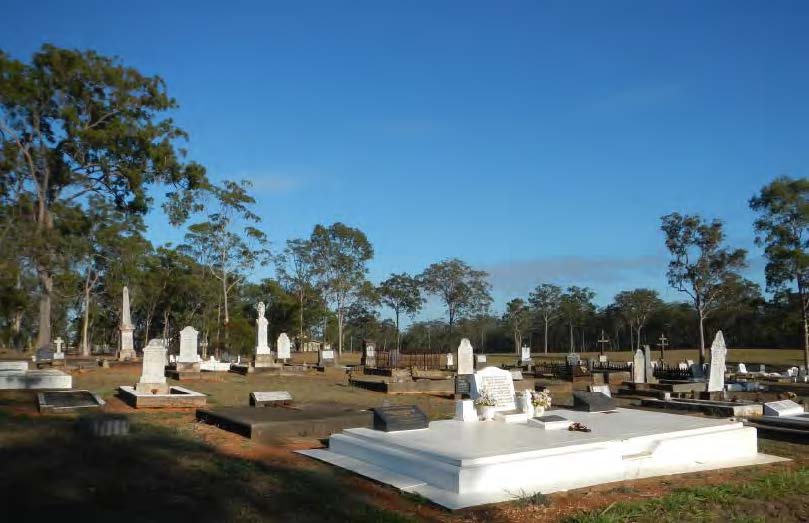
The Cordalba Cemetery has had continuous use as a burial place for more than one hundred years, and is an important record of the history, cultural patterns, and life in the district.
Cordalba was one of the first village settlements in Queensland, having been selected for the Land and Works Department scheme in 1887, with settlement beginning in 1888.
Under the scheme, participants took up 40 acres on which to erect a residence, clear and make improvements, and in return they received an allotment in the village.
The establishment of Knockroe Sugar Mill nearby in 1890 encouraged local farmers to focus on growing sugar cane.
Development of the village took off from 1894 when the Cordalba Hotel was built on the side of the current Commercial Hotel and a provisional school opened.
A blacksmith, butcher, baker and store opened soon after, and the Royal Hotel opened in 1895.
Residents and farmers around Cordalba were instrumental in the establishment of the Isis Central Co-Operative Mill which began operating in 1896.
The construction of the Cordalba railway branch from Childers in the same year led to closer settlement of the district, and Cordalba developed to become the principle village in North Isis.
To respond to the needs of a growing population, the Cordalba Progress Association applied for a cemetery site in 1896 which was soon gazetted and cleared on the north-western outskirts of Cordalba, on Irwins Road and Cemetery Road.
Cordalba Cemetery, which includes the graves of early settlers in the district and reflects the diverse national and cultural origins of the residents, is listed among Bundaberg Regional Council’s Local Heritage Places.
Among the early 1900s settlers were Russian nationals who fled the dangers of the Russian civil war and took up sugar cane farming in the district, some later going on to enlist in the Australian armed forces during World War I.
In 1913 Cordalba was connected by rail to Booyal and Dallarnil, and by the 1920s the district had grown to a population of around 1,000 people.
The village grew around this time to include four churches, three hotels, a post and telegraph office, a motor garage and workshops, a railway station, multiple stores, newsagents and cafes with public amenities including a recreation ground and a racecourse.
The Cordalba Cemetery covers approximately four hectares, with only part of the area along Cemetery Road containing marked graves.
The cemetery is divided by a stand of native trees, with a general section to the front and a Catholic section to the back.
The majority of the graves include rendered or concrete surrounds and plates, with some featuring wrought iron and timber fencing, and a number of more elaborate monuments.
The burials reflect the diverse ethnic backgrounds of settlers in the district including English, German and Russian nationalities.





where is the survey map? Perhaps some names would be great, like Podi Singho. one poor chap took his life leaving a wife and children.